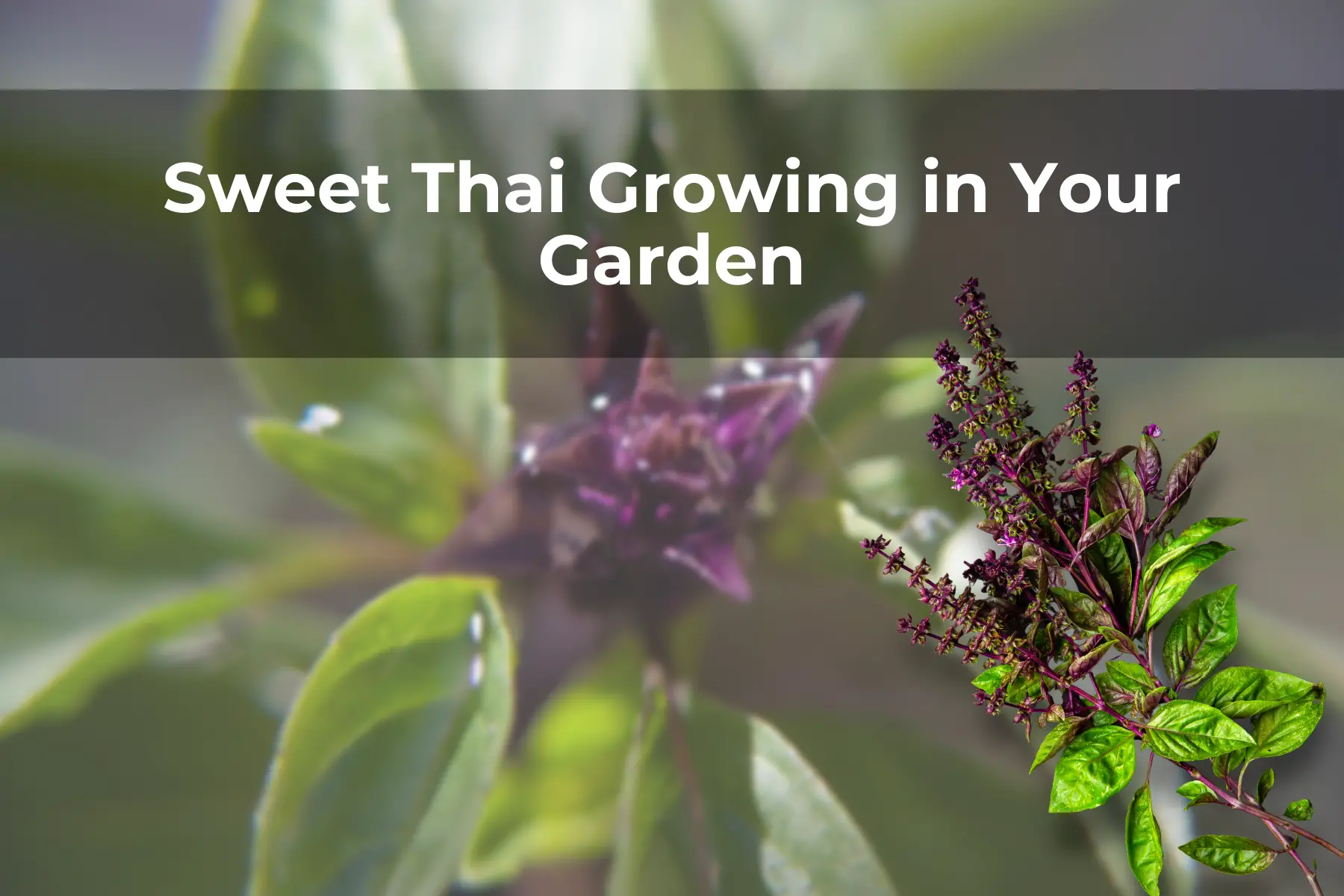Last Updated on April 4, 2024 by Real Men Sow
Sweet Thai growing is prevalent in Southeast Asia for its decorative qualities and dish flavoring. It is commonly known as Thai basil and is a mint-family plant with a pleasant odor. This plant can grow to 1.5 feet tall and bears blue, purple, and pink flowers. The stem of Thai basil is square and purple. Therefore, they also call it the purple Thai Basil. The leaves are bright, narrow, and serrated. Its seed can be either brown or black, also known as “nutlets”.
Sweet Thai Growing
You can either grow Ocimum basilicum var. thyrsiflora from cuttings or seeds. The latter method is easy and prevents you from crossing your basils. This is a great way to preserve rare basil varieties. The following steps are required to grow a Thai basil perennial out of a cut:
- Before the stem blooms, take a 4-inch section.
- Remove the stem’s bottom portion of leaves
- Place the stem in a small glass container that has enough water.
- Place the container next to a window
- Every day, change the water
- Once the roots appear, transfer the basil to a small container.
Grow them in sandy soil that is well-drained and has at least 6 hours of sun per day. For small varieties, space plants 1 to 2 feet apart, and for larger ones up to 3 feet. This is to allow for air movement.
Watering Process for Sweet Thai Growing
Ocimum basilicum has a thirsty nature but cannot live in a swamp. This means that you need to ensure proper drainage. Poor drainage is more fatal than any other reason. It is best to watch the soil and water the plant when it becomes light or flaky. Don’t wait until your basilicum plants start to wilt before you increase the watering.
These plants are mass-produced in Southern regions by growers who water them 2-3 times per day. If you are not one of these growers, you can water your Thai Basil once a few days. If you have plants growing in clay pots, increase the watering.
Harvesting, Pruning & Transplanting
It’s time to prune or harvest the Ocimum basilicum when it has three sets of real leaves. When you transplant or report Thai basil, make sure to prune it higher than the second pair. You can keep pruning your plant every 3-4 weeks.
This type of aggressive harvesting yields about 20 cups of Ocimum Basilicum leaves from one plant. You might still want to be gentle with your Thai basil. You might only need to cut the topmost leaves once per week.
Fertilizing
Mix a 10-10-10 fertilizer with 50:50 water twice as often than the directions recommend. A fertilizer high in nitrogen is recommended if you have leaves. If you need leaves, use a dry mixture that is easy to mix with the potting mix. Use a 14-14-14 fertilizer to give seedlings two sets of real leaves. Again, dilute 50:50 with water.
Organic fertilizer and fish emulsion are good options. If the plants are in flats, you can use kelp to add it once per week or once per month.
Pests And Diseases of Sweet Thai Basil
Ocimum basilicum is home to the most serious pests, whiteflies and grasshoppers. Spider mites, cutworms, and slugs are all known for chewing away at the plant. Spraying the plant with water can kill the pests, but it won’t harm the plant. You can also make your own pesticide soap and a homemade pepper spray.
To stop cutworms, you can either pour wood ashes around Thai basil, or place a cutworm collar on the base of the plant. Install a 5-inch copper fence to protect against slugs. Copper reacts to the body of the slugs on contact, zapping but not killing them. In order to keep other insects away, you can cover your Thai basil with fabric rows during the day.
Fusarium wilt is its most deadly disease, which can kill seeds and stay in the soil. Fusarium wilt can cause damage to plants and spread to other plants. Defeat it by planting hardy Ocimum basilicum varieties, but these are also options.
- Rotate crops
- Solarize the soil by covering it with plastic to raise the temperature
- Properly removing diseased soil and plant

